The CAT 2018 exam was held today across India in two slots. The first slot of CAT 2018 exam was held from 9am to 12 pm and the second slot was held from 2 pm to 5 pm. We bring you CAT exam analysis
CAT 2018 Slot 1 Analysis
CAT 2018 Paper Pattern
CAT 2018 came out of the bag with two thuds and one loud bang. The paper started with an ‘even easier than 2017’ VARC section. Then the level of difficulty of the DILR section provided a major reprieve to the nervous ‘jantaa’ as it broke with the trend of the last three years. It was a moderately difficult section, as compared to an out and out difficult section that has been observed over the last 2-3 years. However, this relief was short-lived as QA came out all guns blazing. IIM Calcutta kept its reputation intact, with its emphasis on the QA section. So, the break-up of the paper was as follows:

Verbal Ability and Reading Comprehension
VA&RC greeted students with an easier than expected paper. However, the pattern of the paper didn’t strictly match that of the sample paper provided by the CAT team. There were 34 questions with 7 Non-MCQ questions. There were no instructions provided for the number of questions in each passage. However there remained 5 passages. One passage had 4 questions (the passage on Genetics) while the rest had 5 questions each. The topics of the remaining RC passages were also from familiar areas. They were easy to read. There were quite a few inference-based questions, but these were easy to attempt. The options were not really very close. Only 4-5 questions from RC were tricky. However, a student should have followed the POE (process of elimination) to be able to achieve a decent accuracy rate as the options were not straight forward. The VA section had one major change. There were 4 Subjective Para Jumble questions, and all of these had 4 sentences each. There were 3 Odd sentence para-jumble questions. These questions were easier than expected. A student could have easily managed to get 4 questions correct out of the 7 PJs. These were TITA questions. The three summary questions were difficult. The paragraphs focused entirely on research methodology and academic concepts. So, they were difficult to read and comprehend. However, the options were not really difficult. So, any voracious reader would have been able to attempt these easily. So, for many CAT aspirants this year (especially those who relied heavily on QA), VA may just turn out to be the saviour.
Major surprise: The para jumble questions were easy, and the sentences were really short.
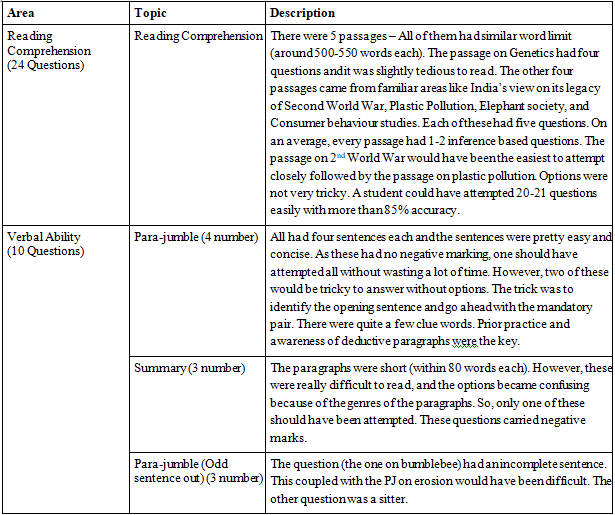
Data Interpretation and Logical Reasoning
The next section was DILR. After three consecutive tragedies, DILR-2018 must have been a pleasant surprise. There were 32 questions in total with 8 Non-MCQ questions. Unlike last year’s paper, the theme of the sets was more conventional. With smart selection, around 4 sets in the section could have been attempted very easily with good accuracy. A couple of sets had 1 ‘difficult to crack’ question each. And a student should have been wise enough to leave these aside. Calculation wasn’t required at all in the DI sets. On the other hand, the LR sets were easy-moderate in terms of level of difficulty.
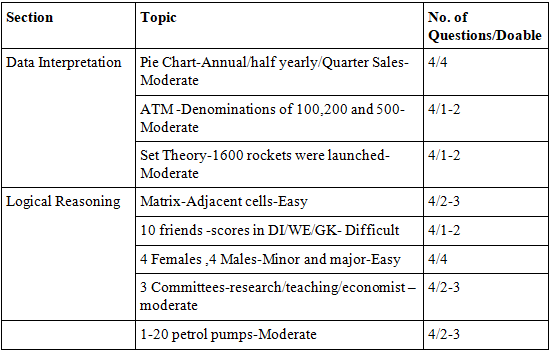
Quantitative Aptitude:
At the end, came the real star of the show, the ‘infamous IIM-C QA’. For students who were already scared of this section, it could have felt like a nuclear disaster. However, for the ‘engineering-dominated’ group, this was not impossible to attempt. The questions were calculation and logic intensive, not theory intensive. There were 34 questions of QA with 12 Non-MCQ questions. It was arguably the toughest QA section in the last four years. The questions were designed to test the grasp of basic fundamentals of the concepts. Arithmetic and Geometry questions dominated the section. In some of MCQs, options were very confusing to get the answer. Number System and Logarithm each had at least 2 questions.
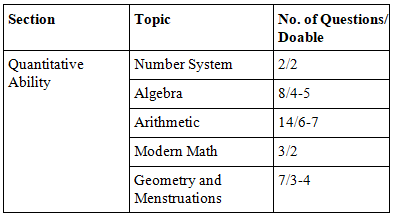
An overall attempt of 18-20 with 85% accuracy would be very good.
Overall, a 99 percentile score could reduce by about 15-18 marks as compared to last year. Thus, a score of 150-155 should fetch a 99 percentile.
CAT 2018 Slot 2 Analysis
The Paper Pattern:
‘Forewarned is forearmed’ is a piece of timeless wisdom. So, students who went into the second slot expecting a similar paper as that of the first slot (or for that matter the CAT 2017 paper) were on the right track. It too started with an ‘easy’ VARC section. The passages were on similar lines as those of the first slot. The DILR section continued to give a sigh of relief to the students. However, some are of the opinion that it was slightly tougher than the first slot’s DILR section. Overall, it was of a moderate level of difficulty. And the reign of QA continued. It remained the toughest section in the second slot too.
The break-up of the CAT 2018 question paper was as follows:
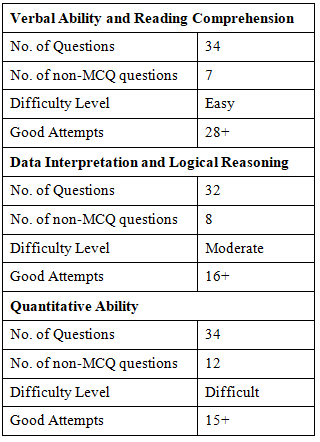
Verbal Ability and Reading Comprehension
VARC continued to be ‘the feel good’ section. The pattern remained the same as that of the first slot. There were 34 questions with 7 Non-MCQ questions. There were no instructions provided for the number of questions in each passage. However there remained 5 passages. One passage had 4 questions (the passage on ‘Grover snails’) while the rest had 5 questions each. The topics of the remaining RC passages were also from familiar areas. They were easy to read. There were quite a few inference-based questions, but these were easy to attempt, thanks to the option choices. The options were not really very close. Only 4-5 questions from RC were tricky. However, a student should have followed the POE (process of elimination) to be able to achieve a decent accuracy rate as the options were not straight forward. The VA section had one major change. There were 4 Subjective Para Jumble questions, and all of these had 4 sentences each. There were 3 Odd sentence para-jumble questions. These questions were easier than expected. A student could have easily managed to get 4 questions correct out of the 7 PJs (PJ and OSPJ) These were TITA questions. The three para-summary questions were of moderate level of difficulty. The paragraphs continued to be short in the range pf 450 to 500 words each. However, as compared to the first slot, the summary questions were slightly easier. Only one summary question appeared to be tough. So, VARC continued to be the ‘easiest’ of the lot.
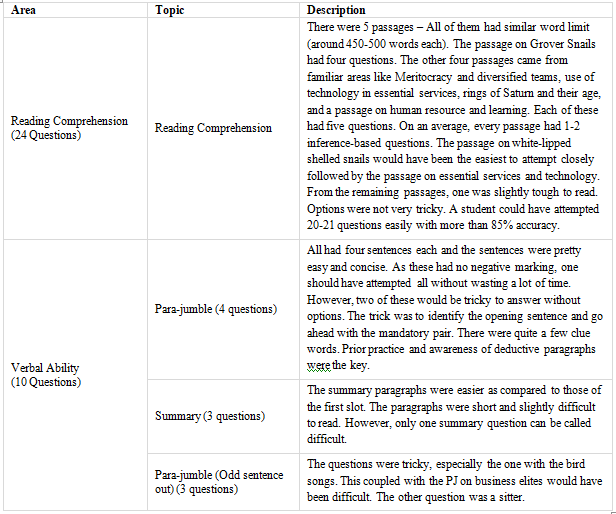
Data Interpretation and Logical reasoning
The second section of the paper DILR continued to be a pleasant surprise. There were 32 questions in total with 8 Non-MCQ questions. Unlike last year’s paper, the theme of the sets was more conventional. There was one very direct DI set with basic calculations. The focus and strategy should have been the quality of the selected sets rather the quantity of the numbers of questions attempted. A couple of sets did have a question each which should have been ‘left alone’. Two sets included calculation but none was on the tougher side. On the other hand, the LR sets were easy-moderate in terms of level of difficulty.

Quantitative Aptitude:
Once the QA section is over, students would have come out with much less satisfaction as they would have had they come out at the end of DILR! If you expected a happy ending in QA, you were definitely not paying attention to all the discussions following the first slot. IIM-C and its love for a tough QA section continued in the second slot too. The questions were calculation and logic intensive, not theory intensive. There were 34 questions of QA with 12 Non-MCQ questions. It was arguably the toughest QA section in the last four years. The focus of the aptitude questions continued to be on testing the fundamental knowledge of the students and their clarity of concepts. Arithmetic and Geometry questions dominated the section. In some of MCQs, options were very confusing to get the answer. Number System and Logarithm each had at least 2 questions.
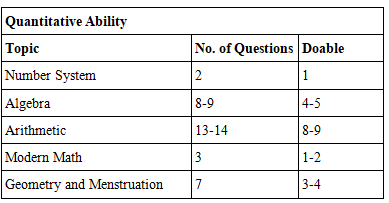
FAQs on CAT 2018 Exam Analysis
| 1. What is the CAT 2018 Slot 1 Analysis? |  |
| 2. What is the CAT 2018 Slot 2 Analysis? |  |
| 3. What is CAT 2018 Exam Analysis? |  |
| 4. How can CAT 2018 Exam Analysis help CAT aspirants? |  |
| 5. What are some important factors considered in CAT 2018 Exam Analysis? |  |














